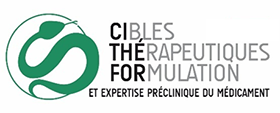Un article intitulé "Rubella epidemiology in the Central African Republic, 2015-2016 and molecular characterization of virus strains from 2008-2016" vient de paraître dans "International Journal of Infectious Diseases".
Auteurs : M. S. Pagonendji, I.Gouandkika-Vasilache, E. Charpentier, A. Sausy, A. Le Faou, R.E. Duval, J. M. Hübschen
Int J Infect Dis. 2021 Aug 24;S1201-9712(21)00684-6. doi: 10.1016/j.ijid.2021.08.050.
Abstract :
Objectives: Rubella cases in the Central African Republic (CAF) are currently identified during measles surveillance. This study aimed to investigate rubella epidemiology between 2015 and 2016 and to provide baseline genotype data for monitoring future rubella control efforts.
Methods: 831 measles IgM negative or equivocal sera from 2015/2016 were tested for rubella IgM antibodies and 350 rubella IgM positive sera collected between 2008 and 2016 were selected for PCR and sequencing.
Results: 411 of the 831 sera (49.5%) were rubella IgM positive and most cases (n=391, 95.1%) occurred between January and April. Most patients were between 5 and 9 years old (50.2%) and more than half of the rubella cases (56.7%) originated from the capital Bangui. Genotype information was obtained for 37 of the 350 selected rubella IgM-positive specimens, with the majority of the patients originating from Bangui (n=24, 64.9%) and sequences covering all years except 2009. Phylogenetic analysis identified genotypes 1E (n=12), 1G (n=5) and 2B (n=20), with 2B being detected from 2014 onwards.
Conclusions: Our study confirmed the important role of rubella as rash and fever disease in CAF and provided comprehensive data on rubella epidemiology and first information on rubella genotypes in the country.

